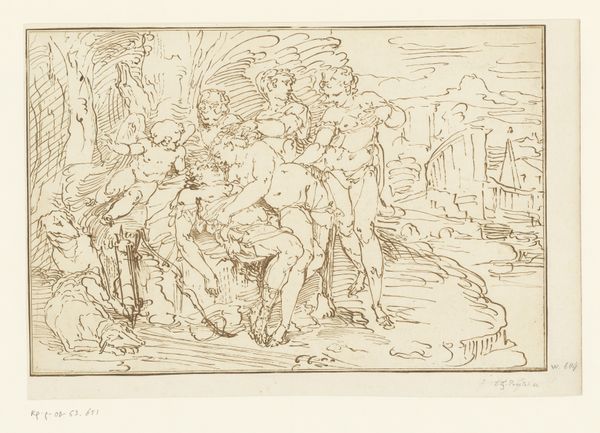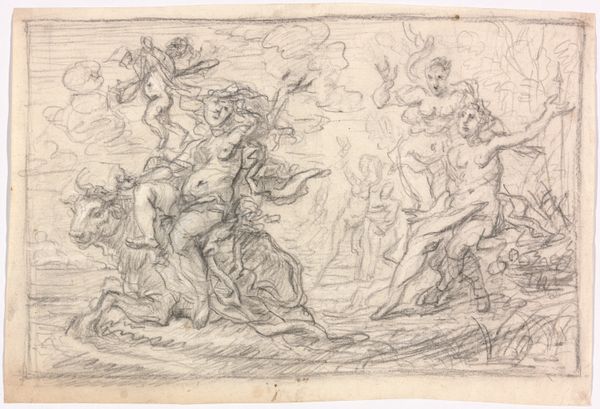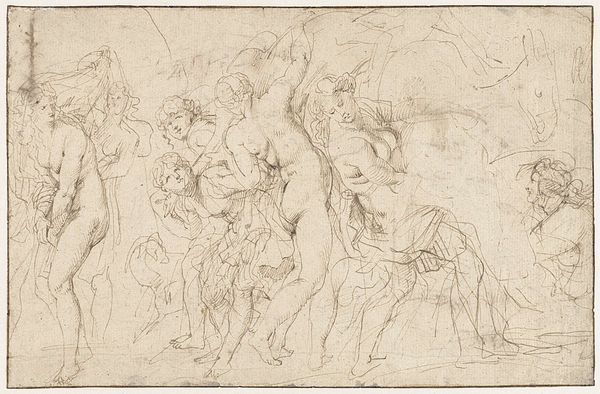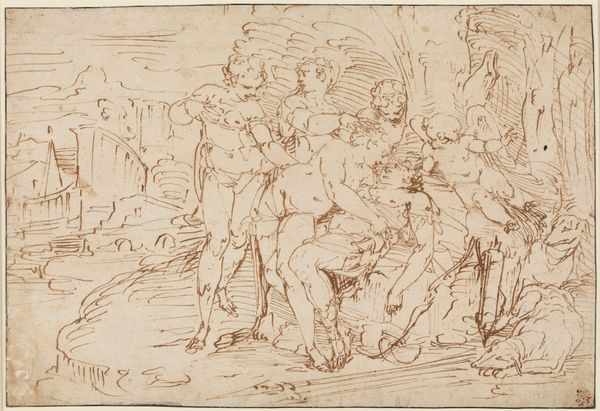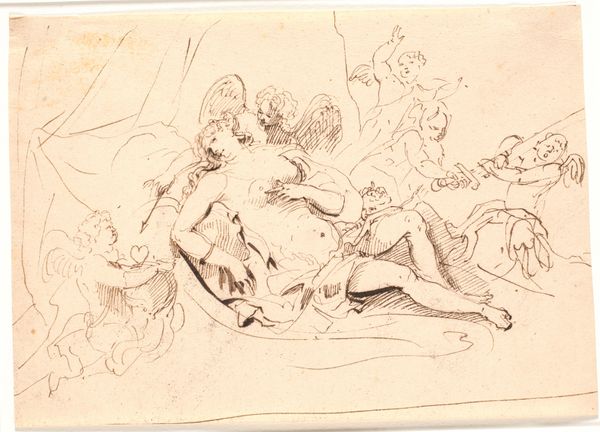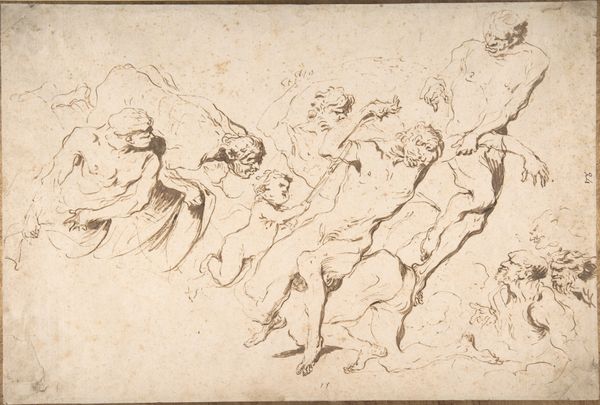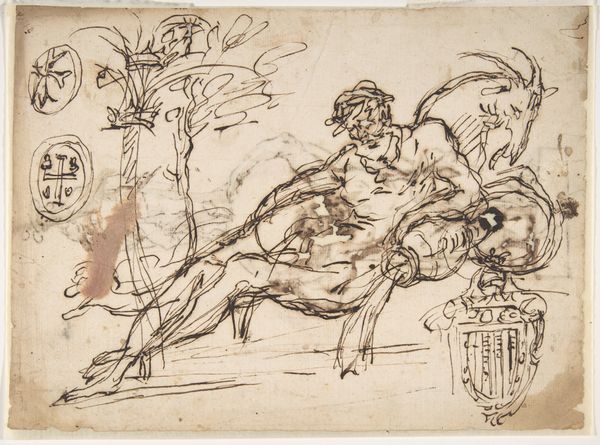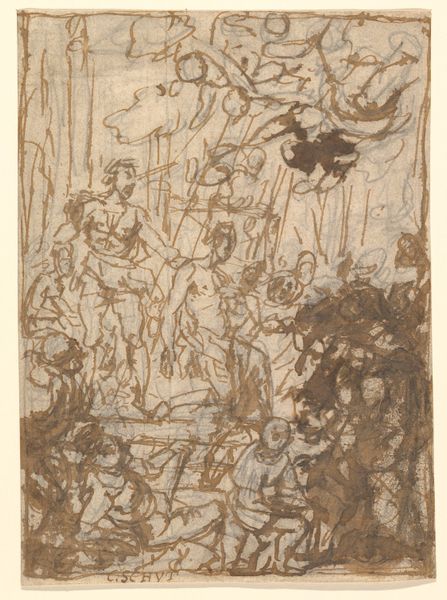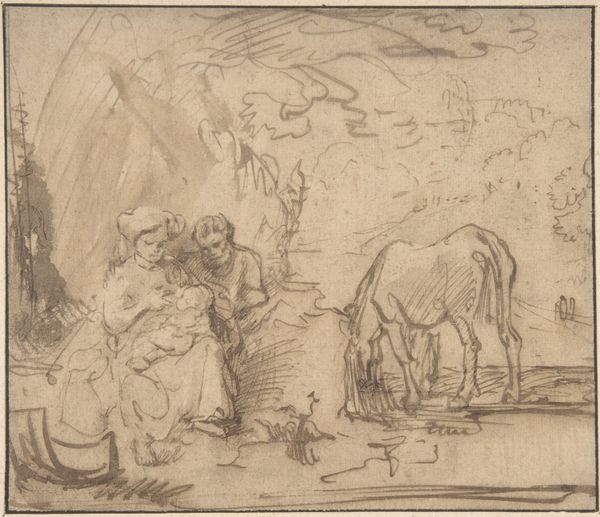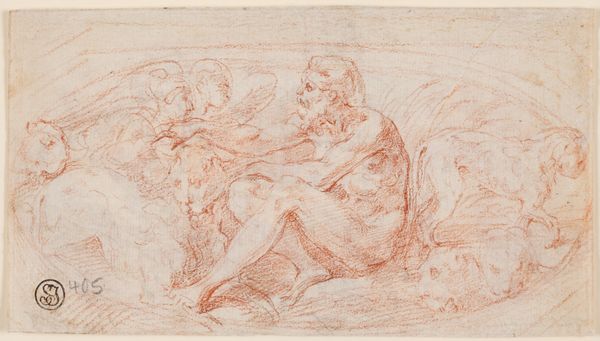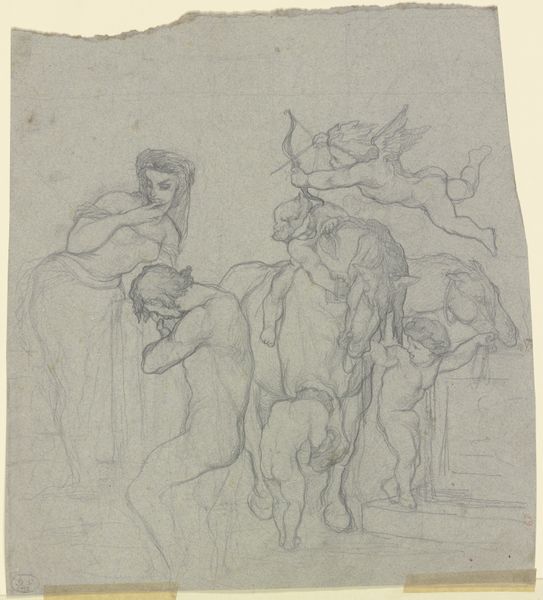
drawing, ink
#
drawing
#
ink drawing
#
narrative-art
#
baroque
#
figuration
#
ink
#
history-painting
Dimensions: 3 5/8 x 7 15/16 in. (9.20 x 20.1 cm)
Copyright: Public Domain
Curator: What first catches your eye in this work? It’s Jacques Sarazin’s “Drunken Silenus Riding on an Ass,” an ink drawing created sometime between 1605 and 1660, now residing at the Metropolitan Museum. Editor: The immediacy! It feels raw, unfinished, like a fleeting moment captured. The ink lines are so gestural, emphasizing movement and form, and honestly it seems like the guy is about to fall off that donkey. Curator: Indeed! Sarazin uses line economy to express the drunken revelry, part of the Dionysian narrative surrounding Silenus. He was, you see, a companion and tutor to Dionysus, embodying intoxication and wisdom. That wobble is symbolic, I believe. Editor: I’m drawn to the actual materiality of the drawing – the kind of paper used, the specific type of ink. What choices allowed for such dynamic strokes? Was this a study for something larger? How accessible were these materials, shaping artistic expression for Sarazin? Curator: I’m intrigued by how Sarazin conveys Silenus. Typically, he's depicted as joyous and wise, but here, he teeters on the brink of losing all dignity. What shift in cultural consciousness allowed for this vulnerable portrayal of a figure normally associated with divine intoxication? Editor: Looking at the creation of the artwork itself, what was the role of assistants in Sarazin’s workshop? Drawing, even one as seemingly spontaneous, involved labor, production processes, and likely a network of skilled hands contributing to the final product. Curator: Consider how Silenus riding an ass evolved into a broader metaphor over time—a warning against excess, a celebration of Bacchanalian freedom, or a symbol of something else entirely? These aren’t merely characters, they're cultural touchstones, reinvented through Sarazin's eyes. Editor: For me, considering how Sarazin's social position as part of an artistic tradition shaped what was created remains interesting, emphasizing those overlooked aspects involved with creating even simple pieces like this drawing. Curator: Yes, and Sarazin offers us a powerful glimpse into Baroque artistic sensibilities. He encapsulates complex human drives with these simple ink drawings. Editor: I appreciate seeing the evidence of human activity that went into creating this image and pondering how it resonates even now.
Comments
No comments
Be the first to comment and join the conversation on the ultimate creative platform.
